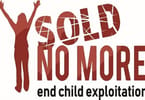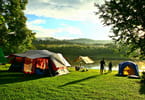BRAVE NEW WORLD OF TOURISM
The world in which we live has seen such dramatic change since the turn of century. This is particularly true when it comes to the issue of safety and security. With the increased frequency and severity of natural and man-made crises over the past decade, our feeling of safety, both physically and psychologically, has been challenged. And our sense of security less secure.
Sadly, there have been a number of moments when civilization has failed to appear civilized.
The “Travel & Tourism” (T&T) sector has been particularly bruised at a number of levels. Growing concerns around safety and security of destinations, and the process of getting to them, has caused travelers to rethink if, where, when, how, and what they travel.
To reflect on but a few examples:
• NATURAL DISASTERS: The devastating tsunami in Asia in 2004, Hurricanes Katrina in New Orleans and Wilma in Mexico in 2005, and more recently the earthquake in Haiti in 2010, have demonstrated over and over the incredible forces of nature. And how they can grab hold of us at any time, in any place, in any form, and with no warning whatsoever. Leaving as much fear in their wake as rubble, not only was there severe damage to the tourism, social, and economic infrastructures of these tourism-dependent destinations, but also extensive damage to the psyche of both locals and tourists alike.
• HEALTH CRISIS: The invisible can often be more concerning than the visible, especially where pandemics are concerned. The outbreak of rare, unexpected, and initially unpreventable and untreatable diseases in different parts of the world, and their ability to be spread to epidemic and pandemic proportions through passenger air travel, has turned passenger illness into a serious threat to the health of travelers and travel plans.
• TERRORISM: Even before 9/11 we were conscious of risks of being in the wrong place at the wrong time. But then 9/11 happened, and not only were we reminded of how interconnected our world is, we were awoken to the risks that these interconnections could bring. The global aviation industry in particular immediately clamped down on travel rules, regulations, and restrictions in a dramatic, determined attempt to stop trouble in its traveling tracks. Changes introduced into the passenger travel experience from check-in to disembarking are now non-negotiable and understandable. The process of travel has become increasingly complicated, drawn out, and time consuming.
• CRIME: At both individual and collective levels, direct in-destination crime against travelers feels to be increasing. Be it credit card fraud or personal attacks, travelers are ever-conscious of the presence of personal risk. Comfort zones are decreasing, trust levels are decreasing, suspicions are increasing. Sadly.
These realities have caste a heavy shadow over the global travel and tourism playground, industry, and opportunity. Accepting fear as a part of a visitor’s experience to a destination is, however, not acceptable.
THE RESPONSIBILITY OF PLAYING HOST
To be a member of the international is to accept the responsibility of taking care of travelers.
When a traveler begins the planning process of travel, they are investing their time, money, and energy into an event which they hope will leave them stronger – be it in business, in mind, in spirit, in creativity, in sense of self, whatever the case may be. That hope is pure.
Once on the path of preparation, however, that purity of mindset can change, and often not for the better. Be it on an individual or collective level, increases in risks on travelers have changed the way the world views and visits nations. Incidents as individual as pick-pocketing or price cheating, and as collective as terror attacks or earth tremors, have travelers looking more suspiciously and skeptically at places in the world which once may have been deemed enticing and inviting.
As strongly as destination marketing and development experts across the globe apply their minds and efforts to attracting travelers, so too should focus be put on protecting travelers by these same industry leaders.
Importantly this is not about increasing tourism police forces. For a tourist to arrive into a destination and see visible, voluminous police presence does not extend a sense of safety. Instead it creates a feeling of fear and reason for distrust. A guardian level of police presence is absolutely acceptable as a respectful, respected presence. But excessive force simply communicates excessive reason for fear.
Instead it is about creating, nurturing, developing, up-skilling, and celebrating a tourism culture, which appreciates and celebrates visitors, be they business or leisure, all year round.
CALMING FEARS, BUILDING DESTINATION BRAND EQUITY AND SUCCESS
A critical component of any destination growth and development strategy is a clear, committed approach to visitor safety and security. This aspect of destination development acts as a vital foundation to destination building and sustainability – as important as infrastructure, policy, governance, and marketing investment.
Safety and security is also an aspect of brand equity. A destination which takes seriously taking care of travelers to the destination is a destination which has care, compassion, responsibility, and respect as parts of its brand DNA.
It is vital that the national Department of Tourism and National Tourism Authority work with all stakeholder partners, especially the:
• Department of Safety & Security,
• Department of Health, and the
• Department of Home Affairs,
as well as:
• Hotel associations,
• Convention & Visitor Bureaus,
• Chambers of Commerce, and
• Airport Authorities,
to create the policies, systems, and structures needed to ensure travelers are kept safe, and the tourism industry is kept ready and responsive to when things can and do go wrong.
It is natural for travelers to be concerned. Sadly, and with far too much frequency, bad things have been happening.
When natural disaster hits, it is natural for travelers to question:
• How long will it take for the destination to rebuild?
• How can rebuilding take place for the tourism industry without compromising efforts to get the locals back on their feet?
• How can I tourist check into a hotel if it can come crashing down if the earth moves again,
• How can I lie sunbathing seaside if the waters might rise and sweep everyone and everything away again?
Similarly when visiting destinations with a reputation for crime, it is natural for travelers to question:
• Is it safe to go out at night?
• Is it safe to wear jewelry in public, or carry a camera, or ask for directions, or look at a map?
And as recent as ten years ago to sneeze would have caused those nearby to spontaneously say “bless you.” Today, as H1N1, Bird Flu, SARS, and other diseases travel the world, travelers now spontaneously respond to sneezing and coughing with a flinch of fear…”what ifs” pass through one’s mind.
• What if the person sneezing has H1N1?
• What if I get it?
• What if they quarantine me?
• What will this do to my holiday/business travel plans?
It may in fact not require a sneeze to create these worries. Walking past an airport temperature scanner can have the same reaction… whether one is feeling healthy or not.
Through proactive, collective, consistent, well communicated, clearly expressed, and continuous commitment to traveler safety and security, travelers will see and feel the safety of a destination. And the tourism community will recognize and accept that success of the industry is directly tied to safety of travelers.
THE COST OF NOT CARING
To lose travelers due to aspects within the control of the destination’s leaders at both public and private sector levels, especially fear of crime or illness, is to accept unacceptable losses in destination:
• Revenues,
• Employment,
• Investment,
• Image,
• Pride, and
• Humanity.
Through genuine, compassionate insight into travelers’ fears and risks, and scenario planning around the “what ifs,” a destination can develop policies and practices which proactively, effectively, yet very subtly take care of their visitors, physically and emotionally. In so doing, a destination builds destination appeal, appreciation, and brand equity through building traveler peace of mind.
To fear the unfamiliar is natural. To welcome and embrace is tourism.
WHAT TO TAKE AWAY FROM THIS ARTICLE:
- The outbreak of rare, unexpected, and initially unpreventable and untreatable diseases in different parts of the world, and their ability to be spread to epidemic and pandemic proportions through passenger air travel, has turned passenger illness into a serious threat to the health of travelers and travel plans.
- When a traveler begins the planning process of travel, they are investing their time, money, and energy into an event which they hope will leave them stronger – be it in business, in mind, in spirit, in creativity, in sense of self, whatever the case may be.
- The devastating tsunami in Asia in 2004, Hurricanes Katrina in New Orleans and Wilma in Mexico in 2005, and more recently the earthquake in Haiti in 2010, have demonstrated over and over the incredible forces of nature.






















